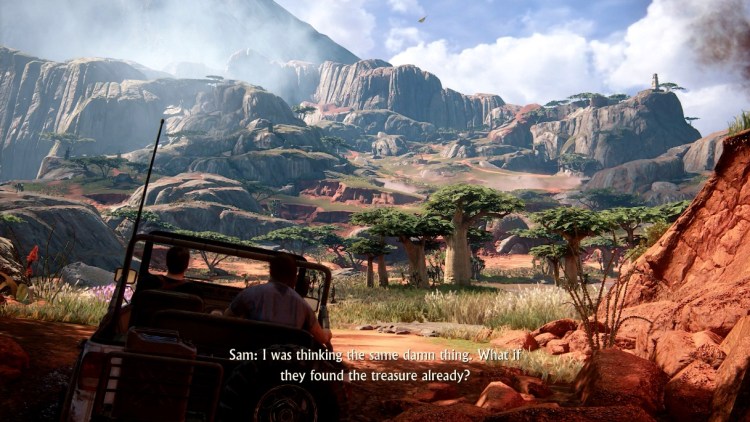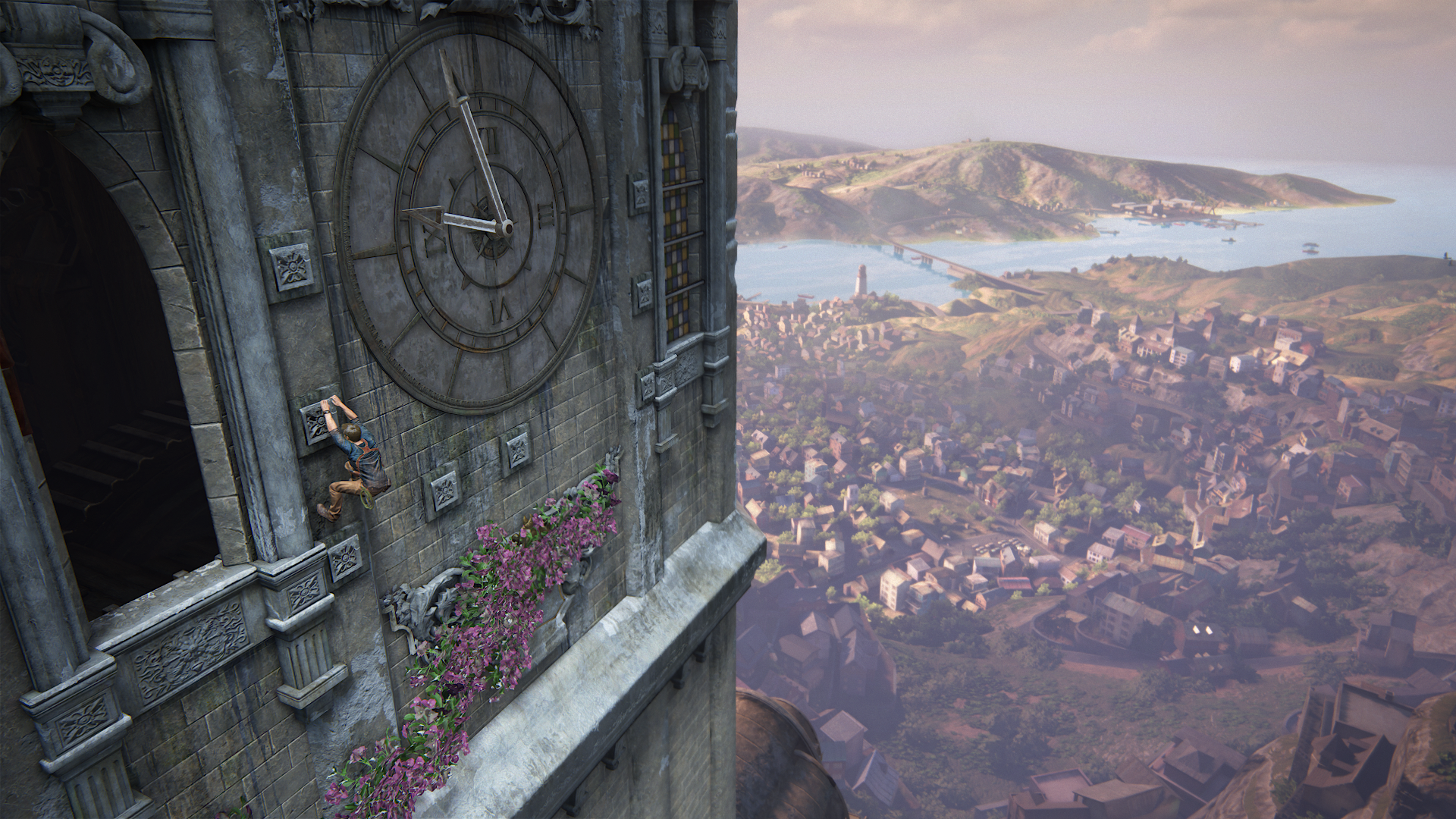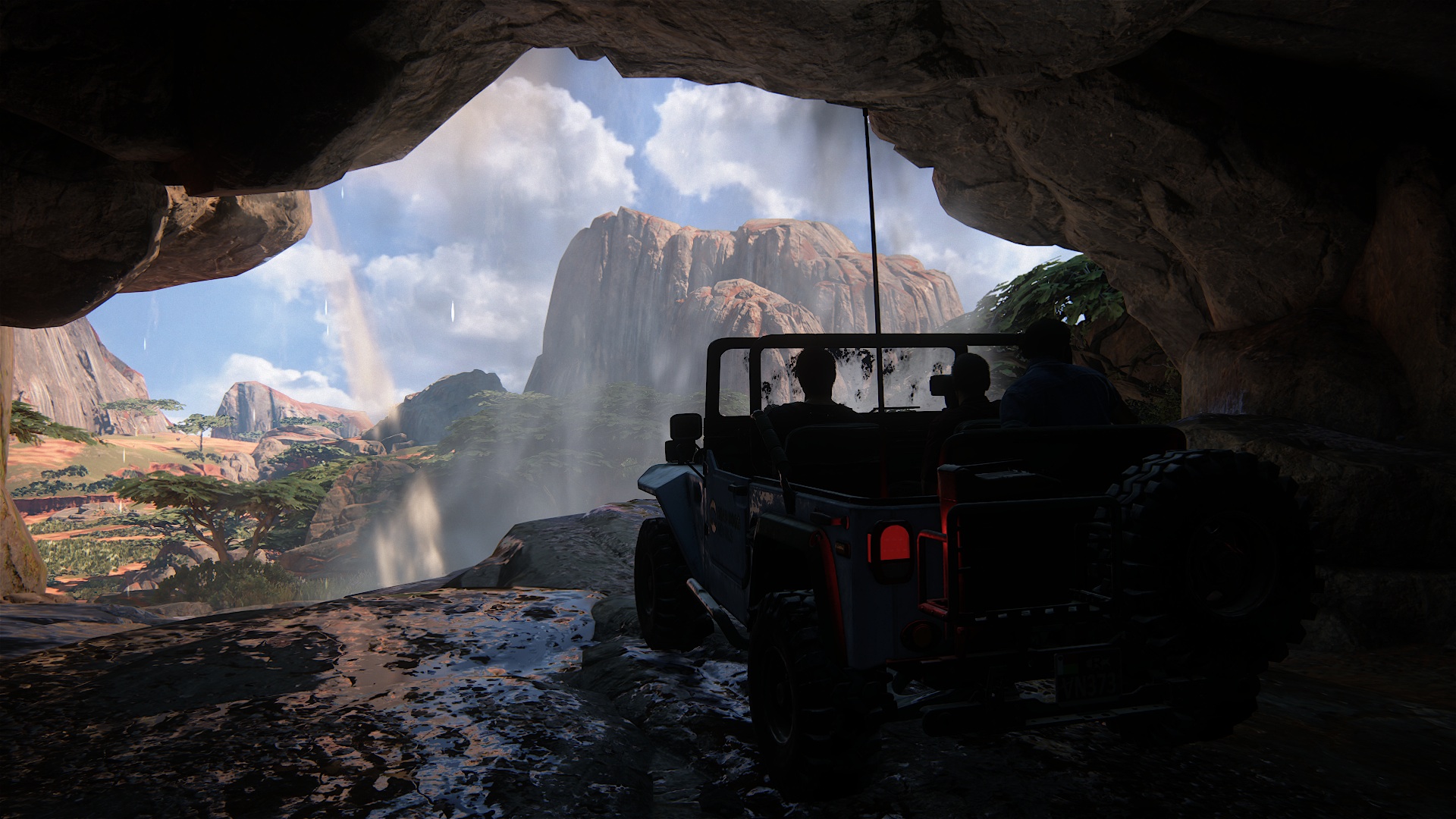GamesBeat: How much more complex are the environments in Uncharted 4 when compared to previous games in the series?
Mosesian: Vastly more complex is how I would describe it. For example, with respects to textures and materials, the previous games on the PS3 were limited to a total of 138MB of texture memory [VRAM] visible onscreen at one time compared to Uncharted 4 which has a limit of 1.5GB. Between the more complex PBR shader, light maps, environment maps, particles, sky domes, wrinkle maps, etc. that vram got gobbled up fast which required us to come up with more sophisticated methods of texture streaming and material optimization.
Olguin: Environments range greatly in Uncharted 4. Some are about the same scope as prior games while we also have areas that are massive. In general, complexity did sky-rocket. We had more than double the assets than The Last of Us, for example. The biggest challenge came from new tech changes.
Prior to Uncharted 4, we did not use as many level of detail [LOD] meshes to optimize geometry count. In Uncharted 4 we used this almost everywhere — we had LODs almost on 60 percent of the assets in-game, which means the environmental team would have to support these assets in all aspects from modeling, collision, shadow proxies, and shaders.
We had many hurdles that the environment team had to go through. The biggest moment where tech came together was the E3 chase sequence. This by far was the biggest environment when it comes to driven distance and the amount of different environmental styles as you go from the market to the docks. When it came to memory, LOD tech, modularity, streaming, car physics, prop destructibility it was an extreme challenge. Nobody at this studio or any studio for that matter has tried to do a level section with that complexity when it came to the amount of art assets that needed to be created to make all these sections of the chase.
E3 chase became our litmus test for everything else. Without the chase sequence and finally having all of the core tech pillars coming together it would have been really hard to have another opportunity in one level to test out our collective thoughts of what a Naughty Dog’s Uncharted 4 should be.
GamesBeat: What kind of research do you do when creating environments?
Mosesian: First an environment layout is delivered to the team by the designer in a primitive “gray box” or “block mesh” form. The designer will play through the level describing the game play requirements and important story beats. Then the art director with concept artists will provide concept images that embody the general theme and feel including color keys. More detailed, specific concepts or “paint overs” are provided if an important establishing shot needs to be precisely directed or if a specific game play scenario or story beat needs to be supported.
Once the critical information about a level has been conveyed, the artists will set out to gather reference material. This can come from a variety of places. I often do an initial search online for images of places that look like the concept art. This helps me get an overall feel or essence of the environment. I usually keep my reference material limited to 10 or 15 images that represent exactly what I need to match the concept art. Then I break down the image into its individual components i.e., grass, dirt, gravel, etc. and then gather specific reference for that.
It’s important to note that when a texture/material artist gets a piece of concept or photographic reference they can’t just color pic from the image for local values because those surface values are altered by the light represented in the painting or photograph. The PBR shader requires actual local albedo (base color) values as an input. So one of the things we did at the start of the project was to build a reference database of surfaces, everything from leaf surfaces, front and back, to metallic surfaces. We shot the photographs in neutral ambient light with polarizing lenses so we could eliminate as much shadows and highlights as possible and then we color corrected the database to get as precise local color and brightness values as possible. Then we compiled the values of a wide range of the surfaces and created a reference chart for the artists to check for accuracy.
Olguin: As early as possible, we start putting together reference images from the areas we are working on. We try to get key images of the look we are striving for and somewhere between this processes we also have concept artists working on putting together the high level themes of the level being worked on.
For my levels I do all kinds of research especially if an area is based on a real world area. For the chase sequence we had many images, but most importantly I gathered some blogs that talked about architectural standards of those areas we were to mimic. With that info we were able to find out the difference of material usage and also what are the standard roofing material which ended up corrugated since it lasts longer than more traditional roofing material like clay, ceramic, and wood. So in general everything we could possibly get info on we try. On Madagascar the entire environment team went to see a documentary in a huge IMAX 3D theater.



